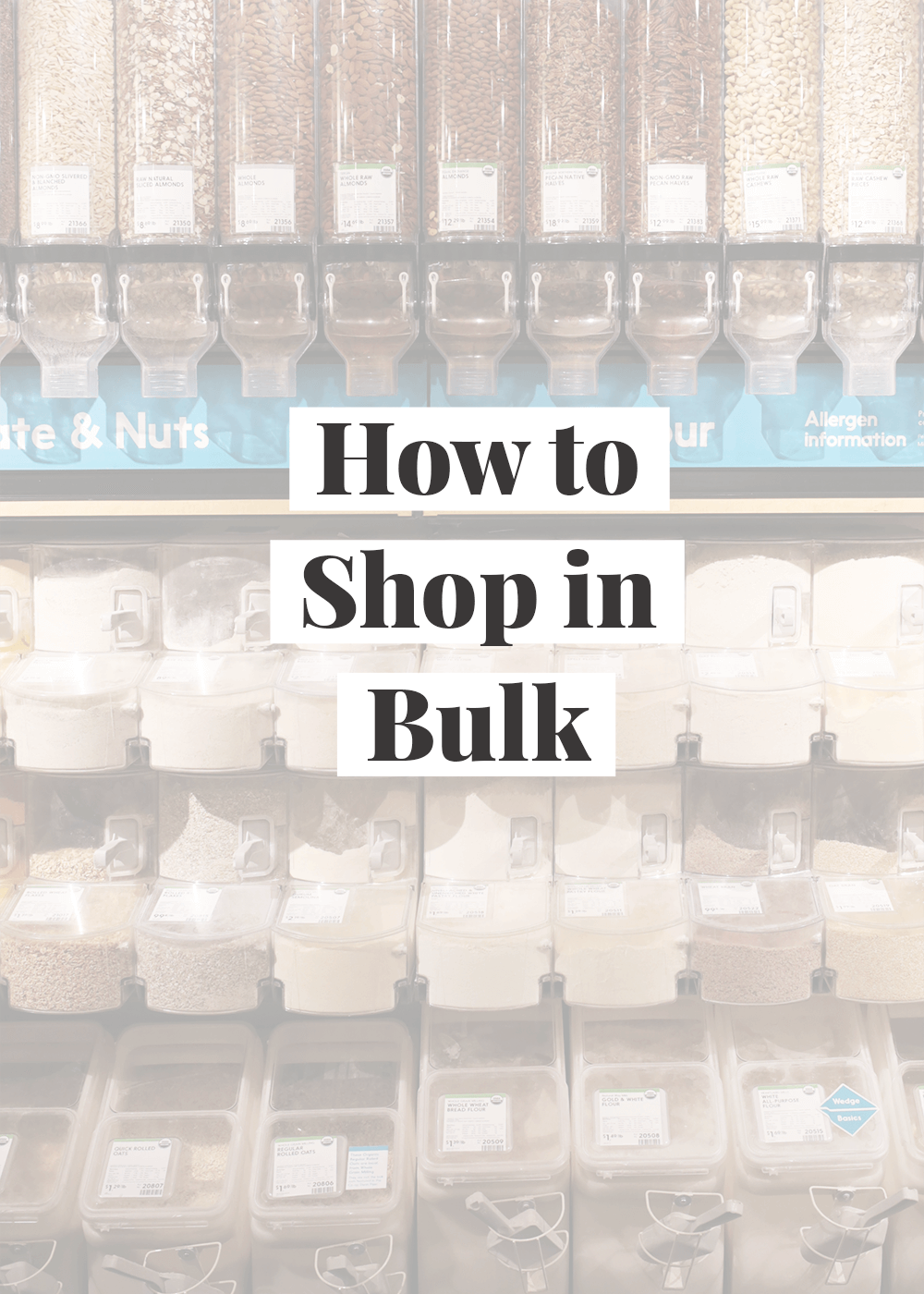
When you hear the word bulk in regards to food shopping, you might immediately think of stores like Costco or Sam’s. But today we’re going to talk about another kind of bulk shopping—how to shop the bulk bins. Unlike Costco or your regular grocery store, you can buy as much or as little of an ingredient from the bulk bins, without any extra packaging. It’s wonderful for so many reasons (like lowering your grocery bill) and intimidating for a couple reasons. Let’s break this really good thing down to doable.
I’ve been shopping dry goods from the bulk bins for the last couple years, learning by trial and error, watching everyone out of the corner of my eye for guidance. But I needed someone to hold my hand in order to feel confident enough to shop wet ingredients in bulk. So I invited myself over to The Wedge Co-op, local to me in Minneapolis, to learn how to do bulk bin shopping the right way, and then share it with you (in case you find yourself as intimidated as me).
After this post, you won’t sweat through your natural deodorant at the checkout aisle anymore, wondering if you made it to the finish line with all the right information, while looking back to a long line of experts starring you down. You’ll be well equipped, so much so you can train the next person wandering down the bulk aisle, dazed and confused.
Rest easy, there’s a good chance you’re already shopping this way. You’re doing it when you pickup 5 limes, 3 red peppers, 1 head of garlic, and 4 onions from the produce aisle. A good majority of produce is sold this way, in bulk bins, at both traditional grocery stores and co-ops. Speaking of co-op, let’s define a couple things first. Once you’ve finished this post, check out my Bulk Shopping Kit post that includes a cheat sheet printable.
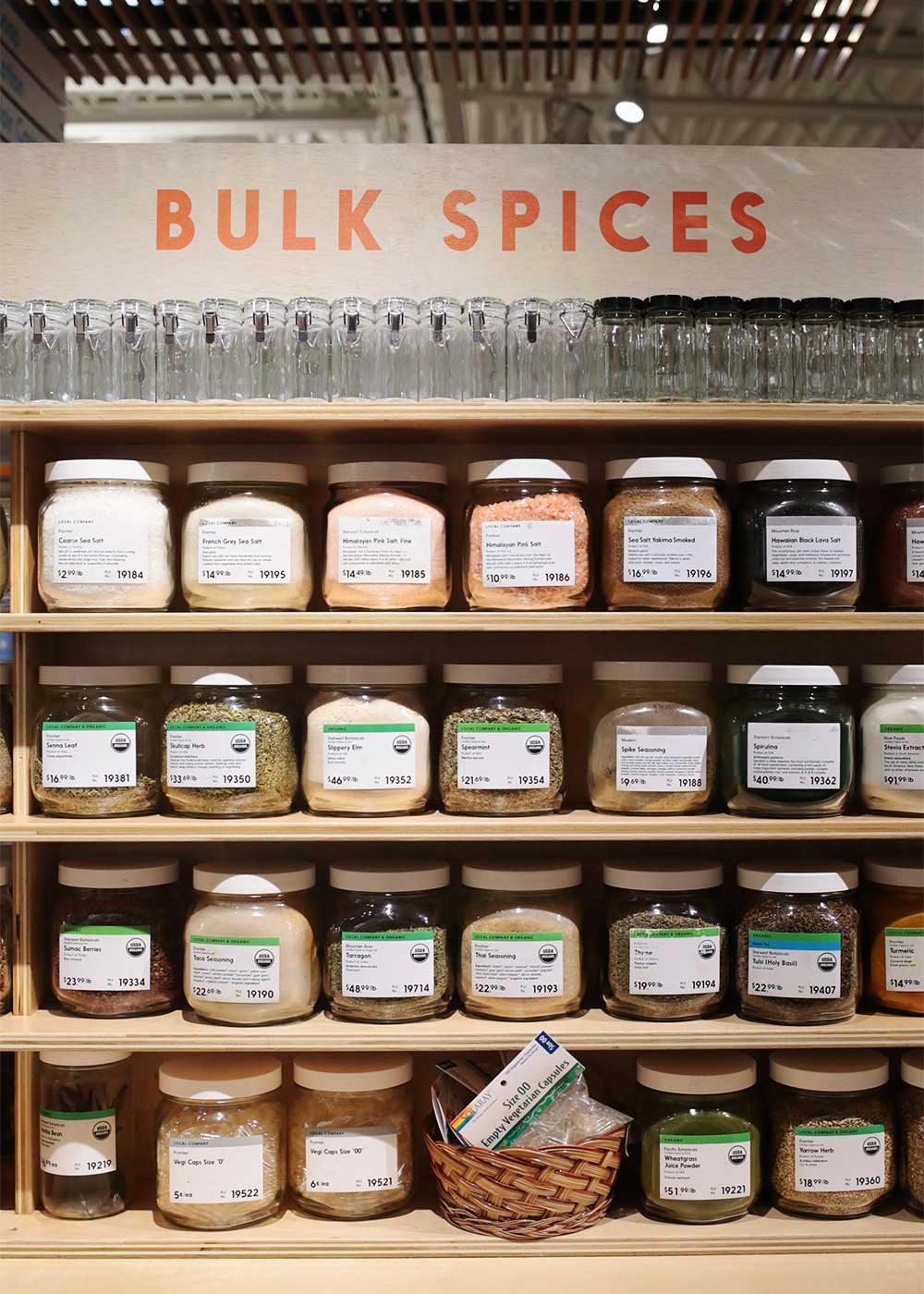
Bulk Shopping Definitions
Co-op (Cooperative) Co-ops are stores owned and democratically governed by their customers. (Source.) The customer buys a small share to become an owner of the store (around a one-time fee of $70). Unlike a corporation, the purpose of this store is to meet the goals of the community (the owners), rather than to accumulate profits for the investors. Any surplus generated is reinvested in the store or returned to the owners at the end of the fiscal year. Owners often receive discounts that non-owners don’t. While there are many types of co-ops, for the purpose of this post, co-op is referring to a food/grocery store. To find a co-op near you, click here.
Bulk A commodity sold in a custom quantity, often at a reduced price, but not always. Items are housed in bins or dispensers, without packaging. Bulk items include produce, meats, dry shelf-stable ingredients (like grains, spices, beans, peas, flours, nuts, seeds, sugar, chocolate), wet shelf-stable ingredients (like oil, vinegar, honey, maple syrup, nut butters), detergents, soap, tea, and coffee.
Tare The weight of an empty container or bag, which is then used to fill an ingredient in bulk. Many reusable produce bags have a tare weight listed on a tag on the side of a bag. If no tare weight is listed, the weight must be determined before filling.
PLU (Price Look-Up) A numerical code associated with an ingredient and its price/weight (i.e. $3.99/lb). It’s usually listed as PLU# 2029. Cashiers type in the code while weighing the ingredient to determine the price. If using a bag or container to house the ingredient, the tare weight is then subtracted from the total weight, so you’re only paying the price of the ingredient.
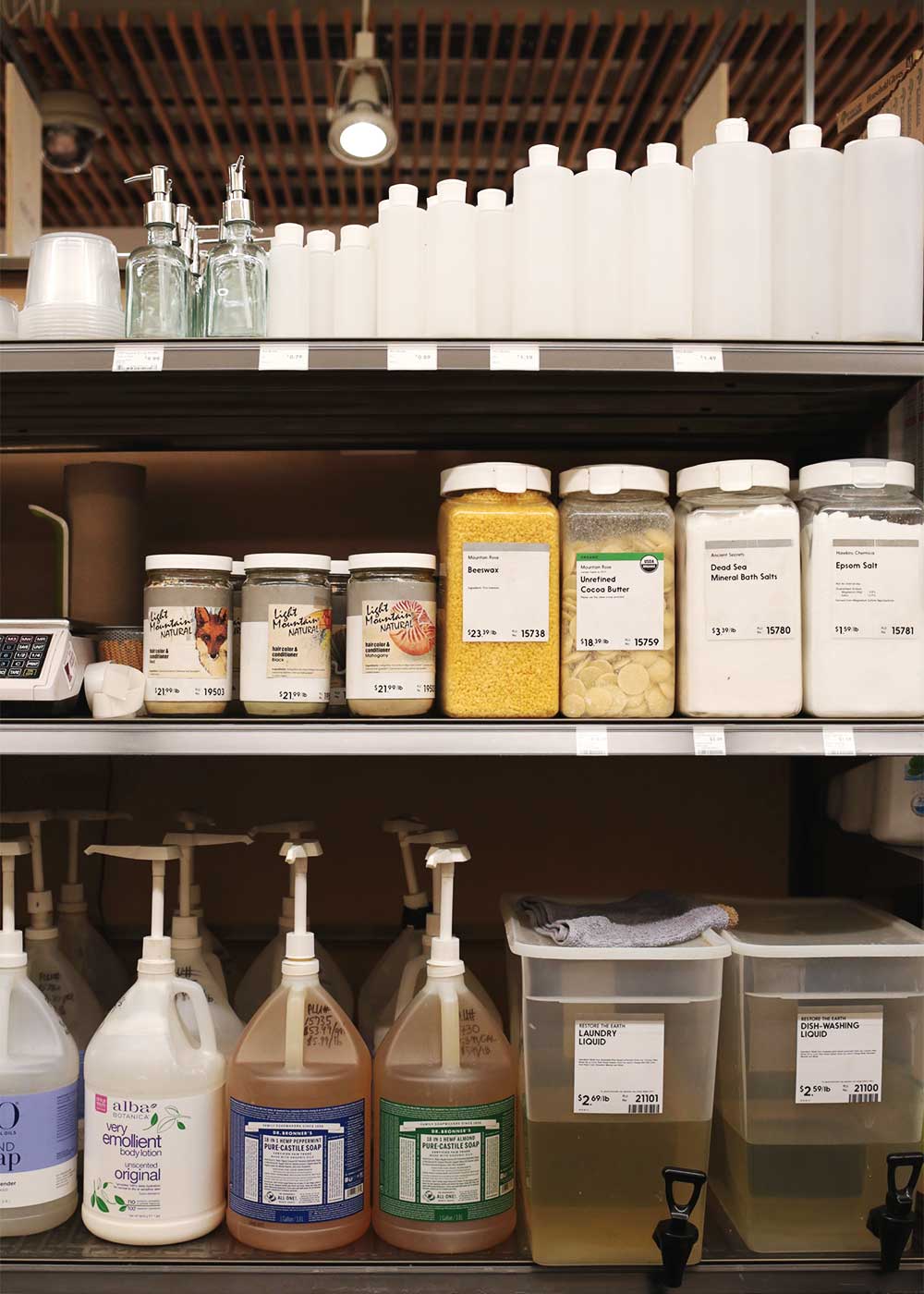
Pros and Cons of Bulk Shopping
Pros
- You can choose exactly how much or how little of an ingredient you want. If you use The Minimalist Kitchen method at your house, this is a great way to fill your clear containers with just the right amount.
- If you have a special, one-time purchase ingredient for a recipe, you can purchase the exact amount from the bulk section without having to commit to a large package that will inevitably get lost in the back of your pantry.
- Food waste is at a minimum with this method.
- Packaging waste is at a minimum with this method. Bring your own bags and containers.
- It’s environmentally friendly.
- There’s often a cost savings shopping this way, though not for every item. In the rare case that it’s not, the environmental savings is of value.
- There aren’t many varieties of each ingredient. No decision fatigue when shopping in bulk! (This could also be a con for some.) However, co-op’s consistently source high-quality, sustainably grown ingredients. You don’t have to stand at the aisle and do research. They’ve already done it.
- It helps turn mindless buying into intentional shopping, which inevitably is a cost savings.
Cons (Kinda)
- Shopping in bulk is a change in shopping habits, so expect a learning curve. Like all things new, it will feel clunky and inconvenient at first. This soon will pass.
- There aren’t many varieties of each ingredient. (This is also a pro.)
- You have to plan ahead, though it’s not 100% necessary. If you plan on using reusable containers (to keep from using additional packaging at the store), you’ll want to make sure to pack the containers and bags needed to fulfill your shopping list. Here’s how to create a bulk shopping kit.
How to Shop the Bulk Bins
There are a couple of specific things to know before diving in or pulling the lever on the bulk bin. Once you get the rhythm down, those feelings of intimidation will soon be a distant memory.
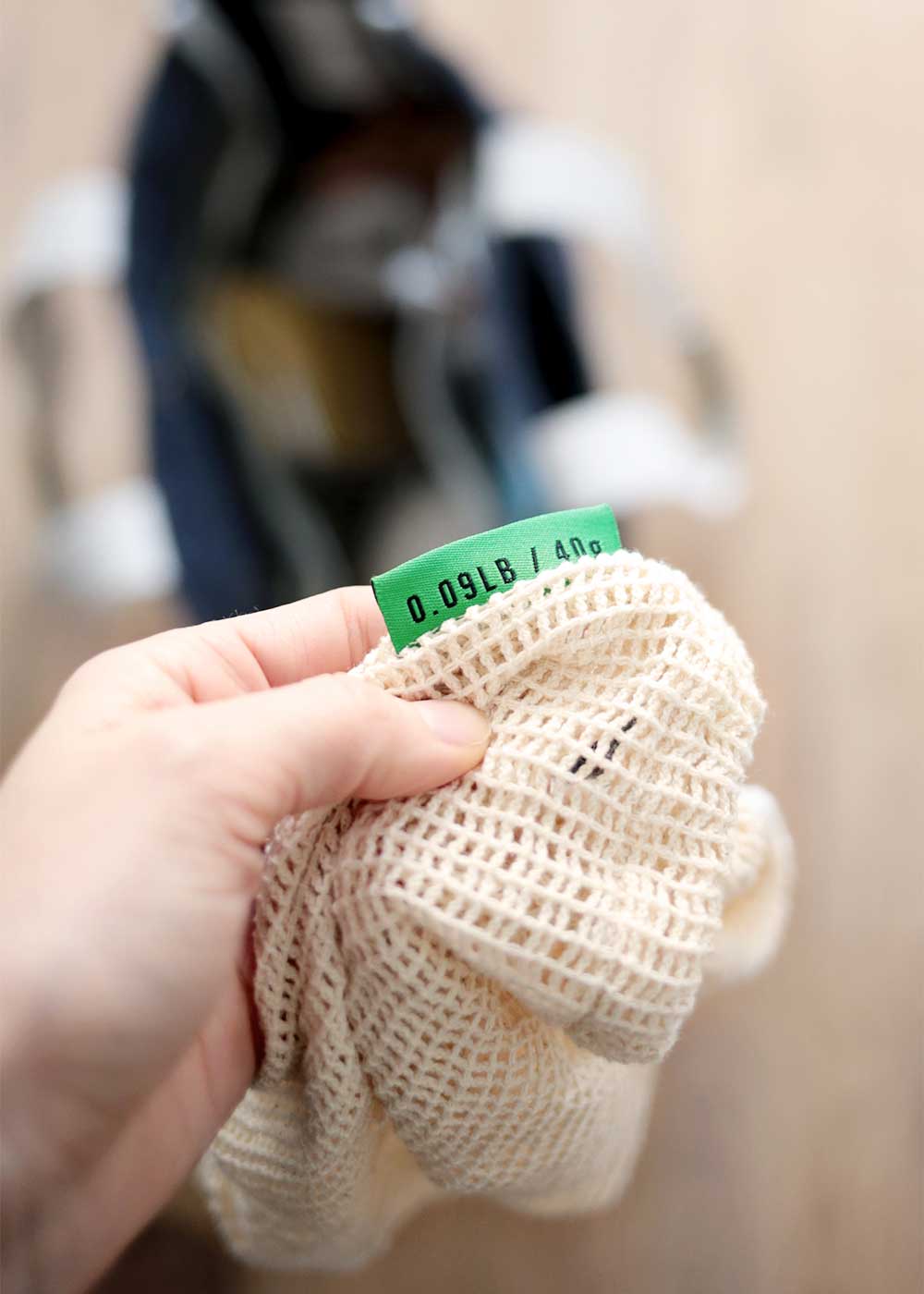
Step 1
Pull out a reusable bag with the tare weight listed on the tag or a container brought from home.
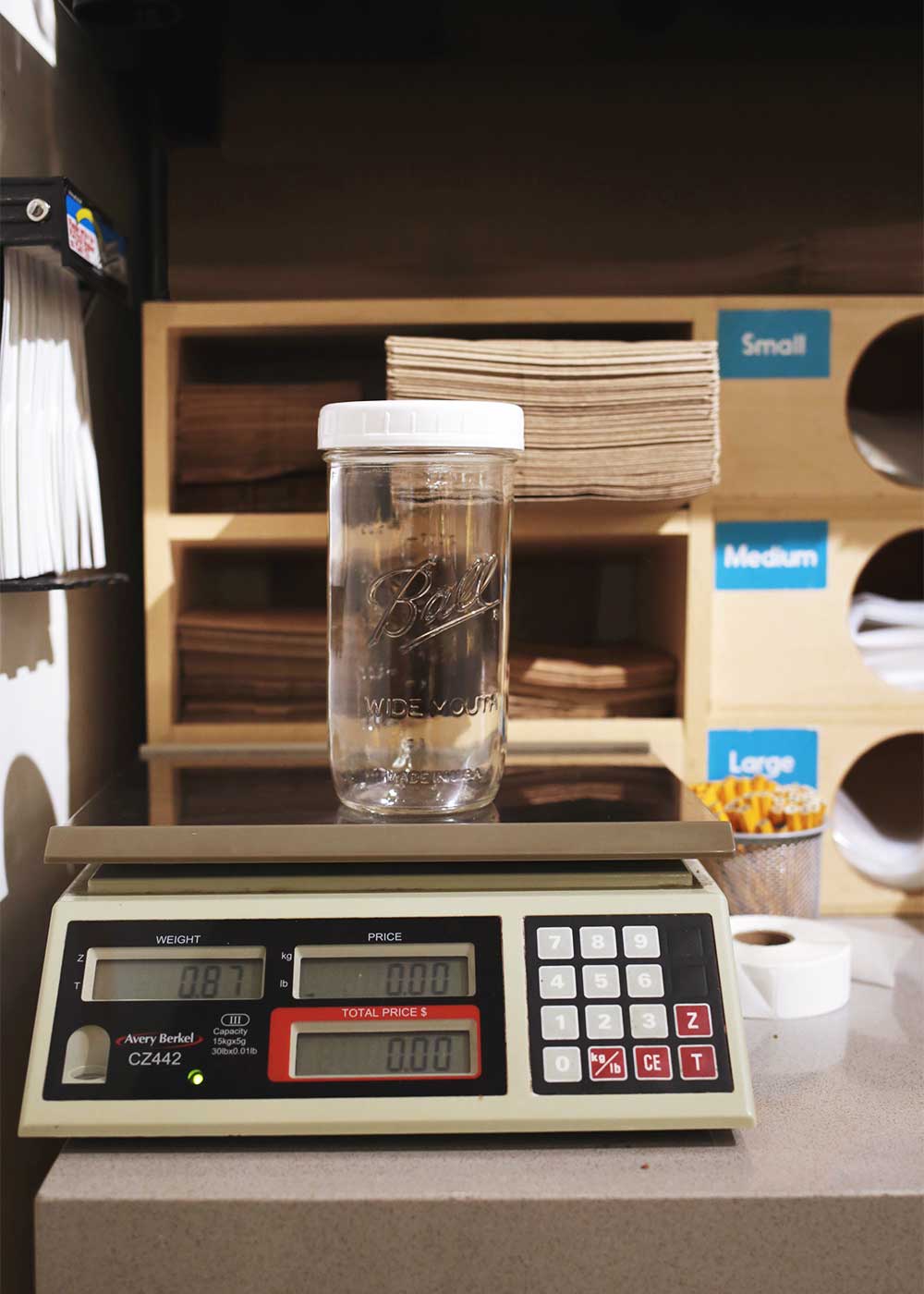
Step 2
If using a container, determine the tare first by weighing it on a nearby scale, lid included.
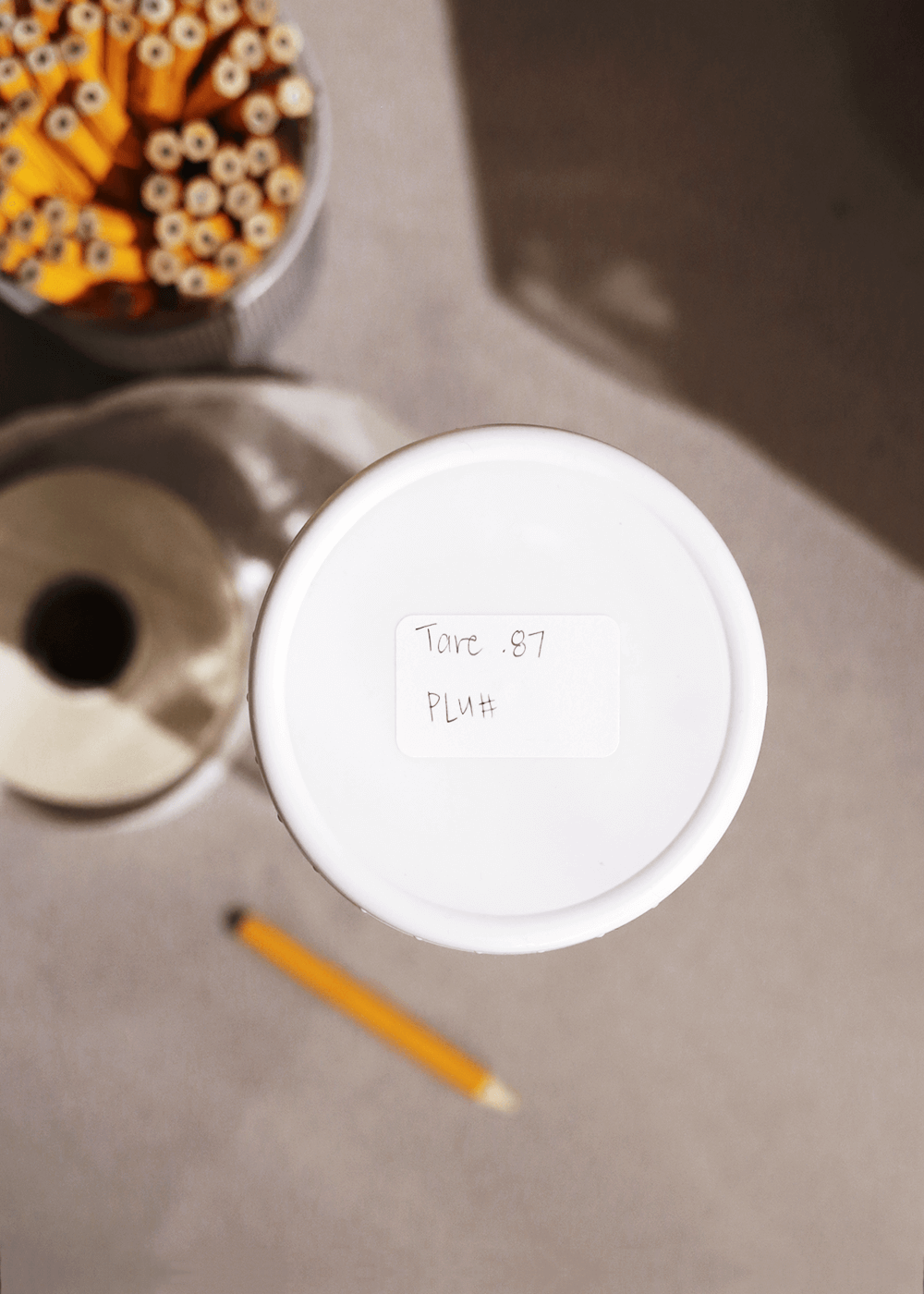
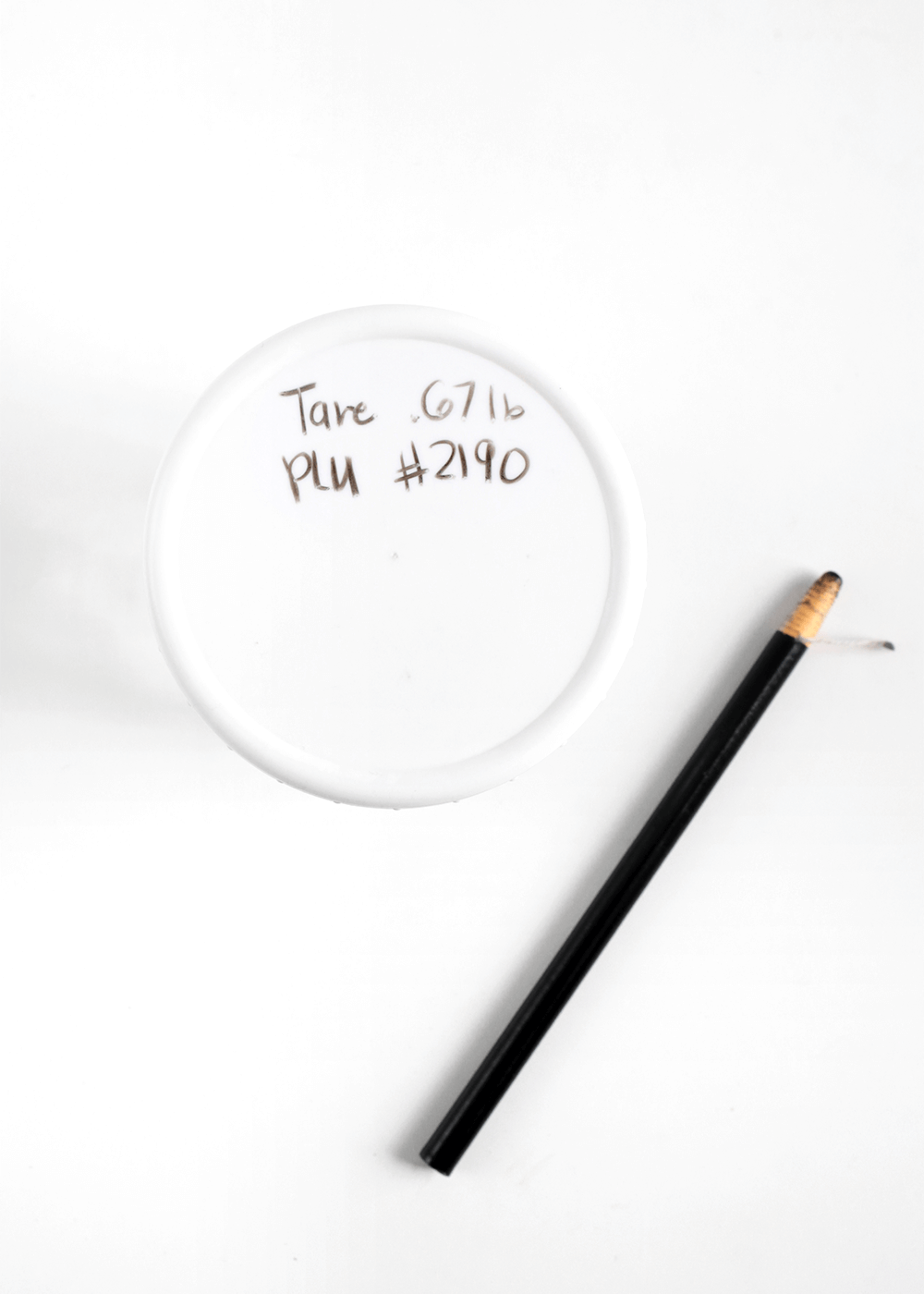
Step 3
Place a sticker from nearby on the lid, and write down the weight (i.e. Tare: .87lb), or use a china marker to write directly on the lid. It can be wiped off after using a tiny piece of a dry paper towel.
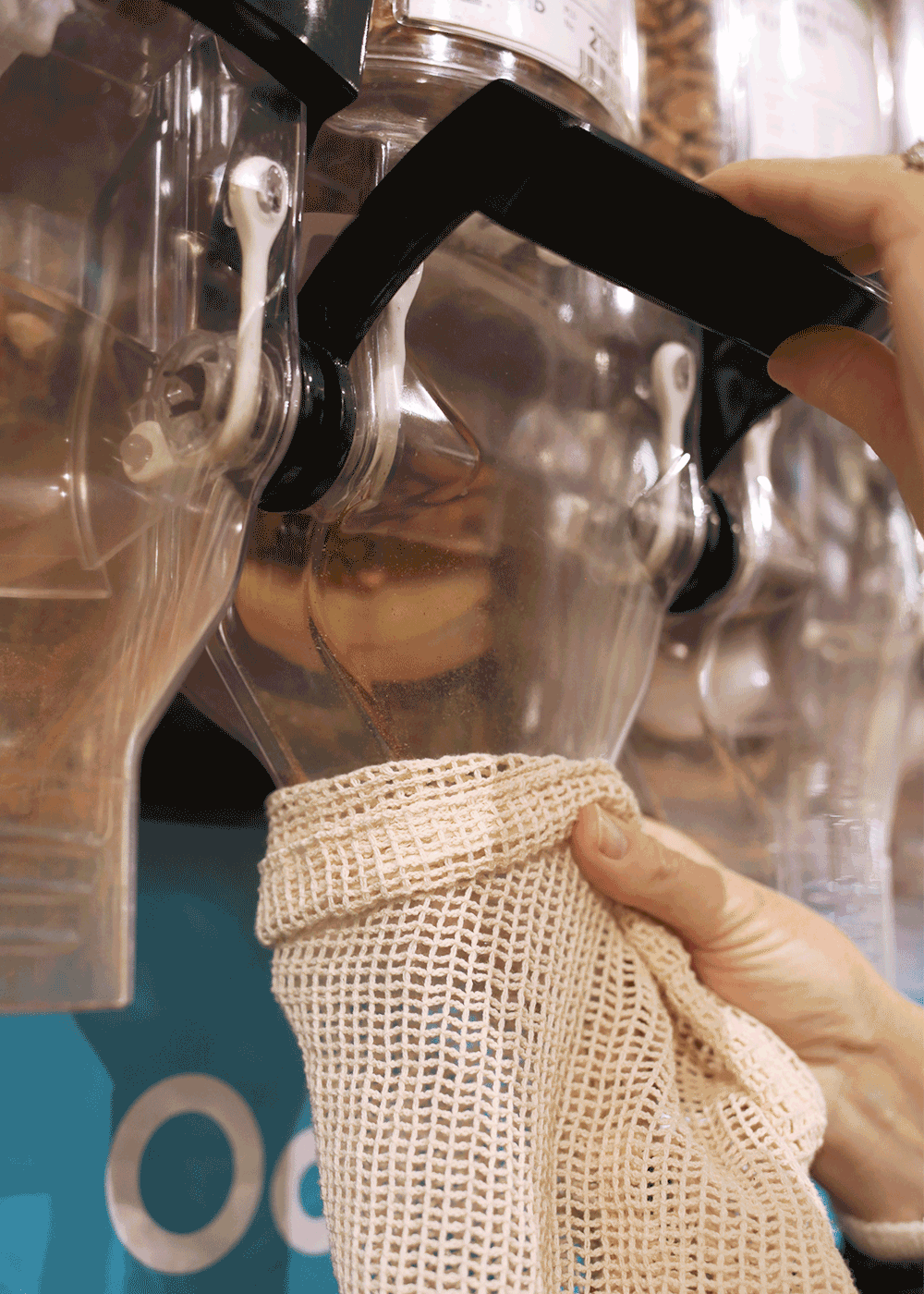
Step 4
Fill bag or container with the desired amount of ingredient, either using a nearby scoop or pulling the lever to the bin.
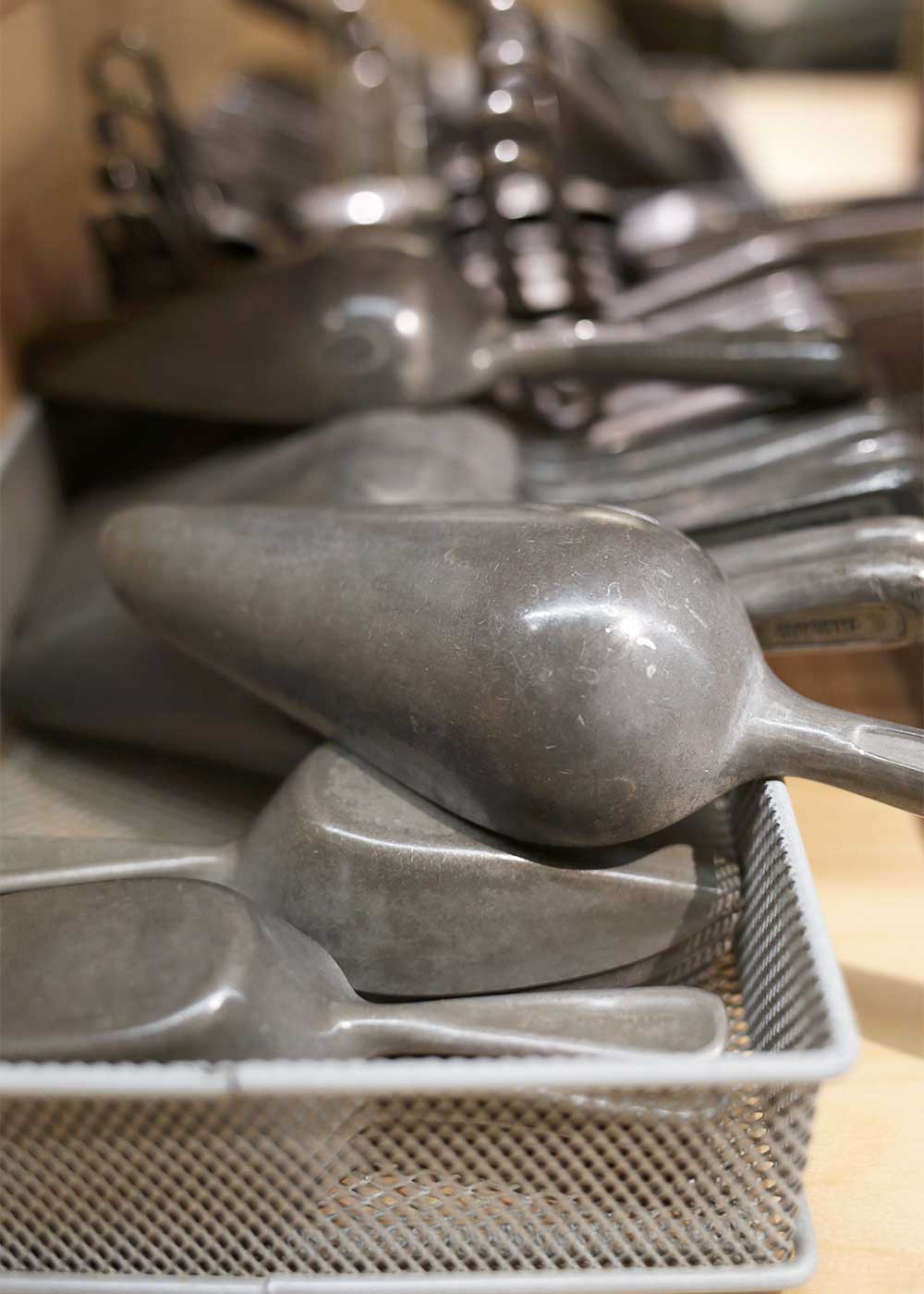
Step 5
Write the associated PLU# with the ingredient on the sticker or use a nearby twisty tie if using a bag. (i.e. PLU 2392)
Step 6
Seal the container or bag, attach twisty tie or make sure the sticker is visible, and you’re done! The cashier will take it over from here. Once you get home, store the ingredient accordingly.
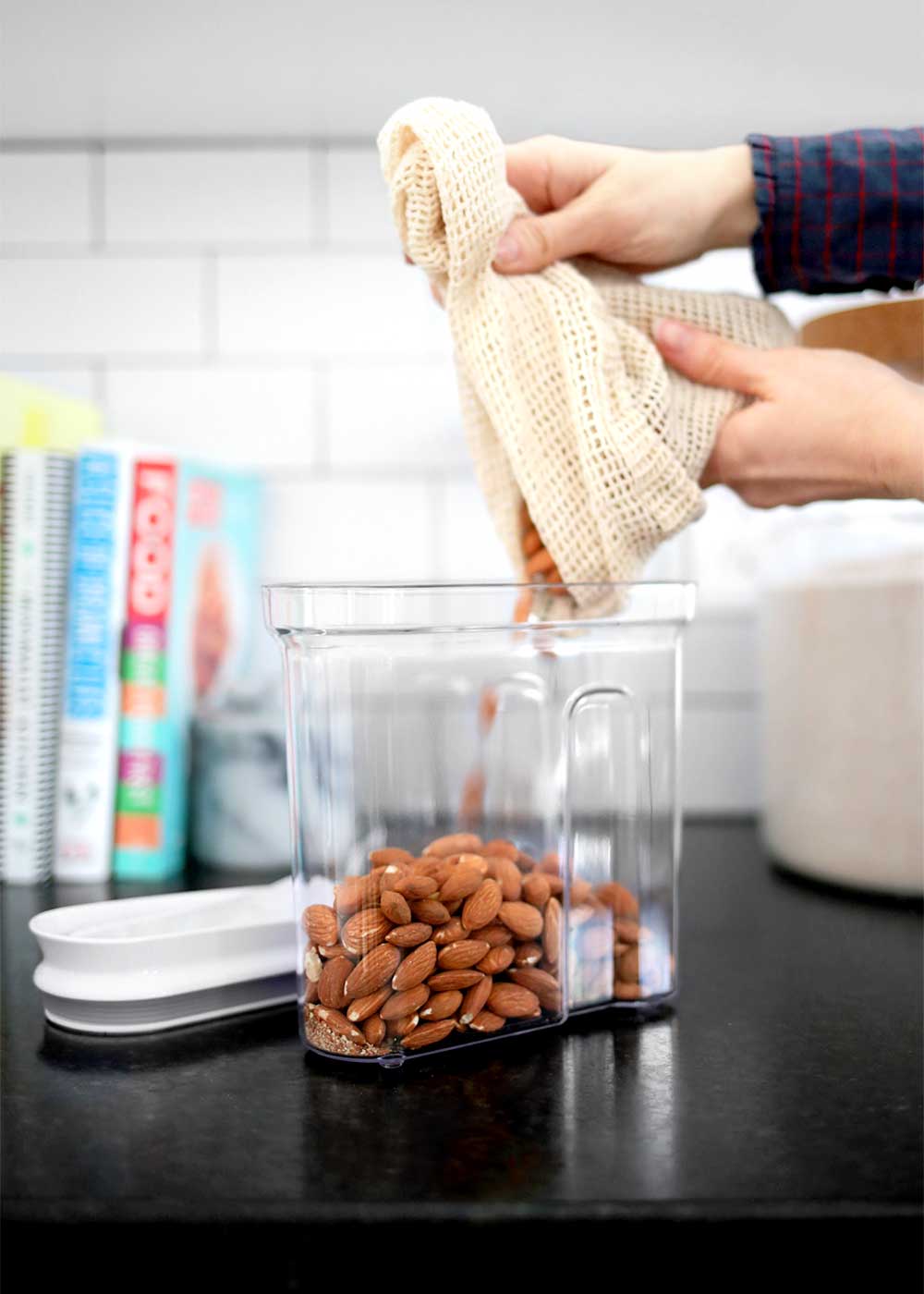
General Tips for Shopping in Bulk
- Keep an ongoing digital grocery list, and shop the list, not the store.
- Plan for additional time at first.
- Leave the kids at home if you can help it.
- Shop during slow times while you learn this new rhythm.
- With that said, create a system/rhythm/process for yourself. Here’s the tools and process I use.
- Start small. Master one thing at time (like dry ingredients or spices) and build on your bulk buying as your confidence builds.
- Use the same weight/size reusable produce bags and containers from home for simple tare weight calculation and check-out.
- Make note of grain cook times listed on the bulk bin labels, and buy the same grains every time for streamlined cooking.
- Buy what you can consume before expiration. Shopping this way will remove the need to pay close attention to expiration dates. The ingredient will be consumed long before expiration. (Need help paring down your pantry to achieve this? Take The Minimalist Kitchen Course, the doable, user-friendly method I use to navigate the kitchen.)
- Depending on where you shop, the cashier may be new to this way of shopping, too. Be as kind to them as you are to yourself. Or, if you’re shopping at a co-op, ask the employees for additional guidance. They are super wise.
Additional Shopping Resources
- Follow people on Instagram like @ZeroWasted.Mn, @taremarket, @SustainYoSelf, @jessiemaysnyder, @simpleishliving, @thewildminimalist for inspiration and ongoing guidance.
- Read through the many resources from The Wedge Co-op like the Shopping on a Budget guide, which includes things like how to save money grocery shopping, how to best store ingredients, and a seasonal calendar.
- Check out this post on how to shop for good produce.
![]()
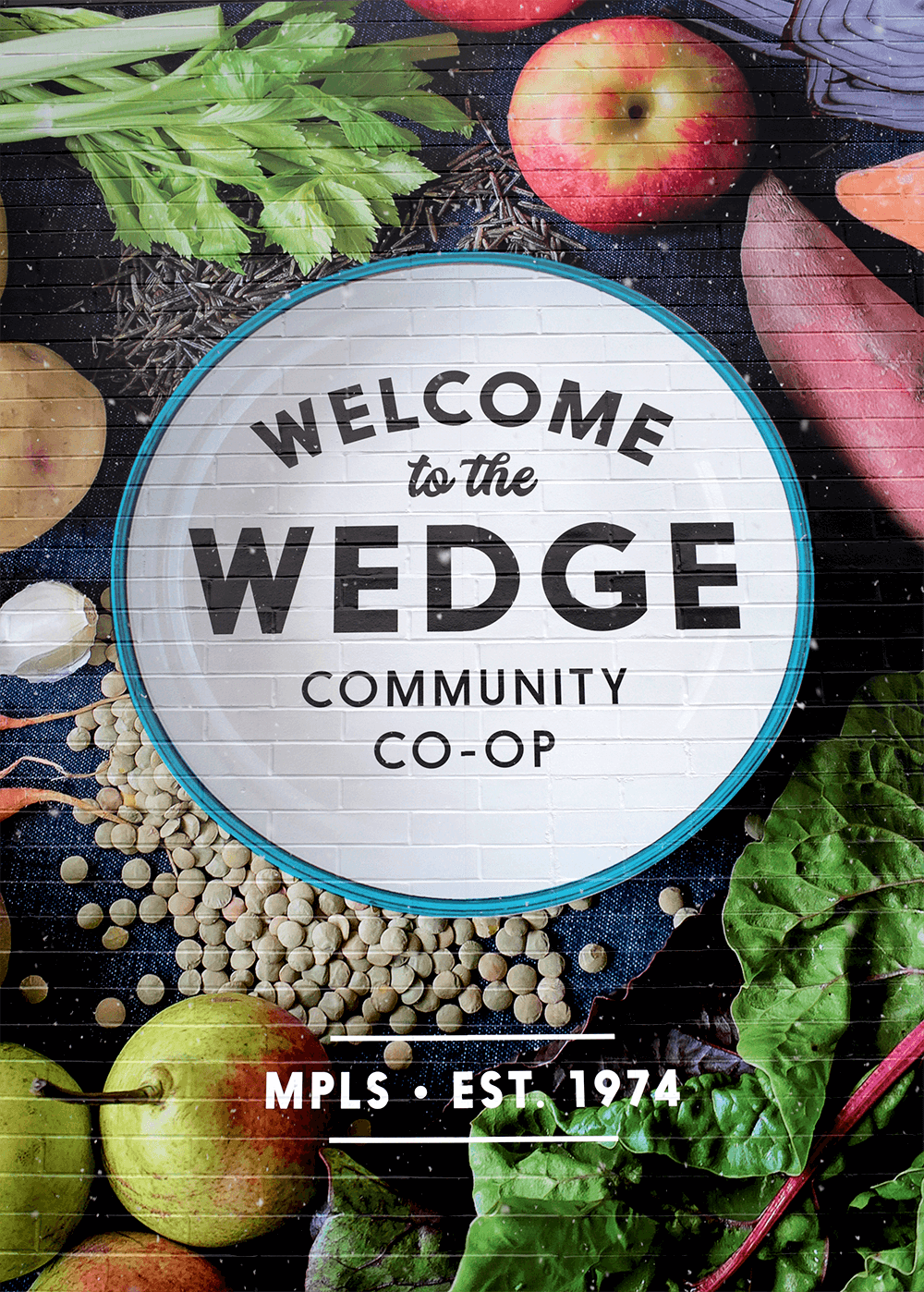
A huge thank you to The Wedge Co-op who let me invite myself over, took the time out of their workweek to walk through everything in detail, and answer all my questions. If you have additional questions, leave them below. I’ll be posting about all the products I use to make bulk shopping doable next week, many of which you already have around your home.

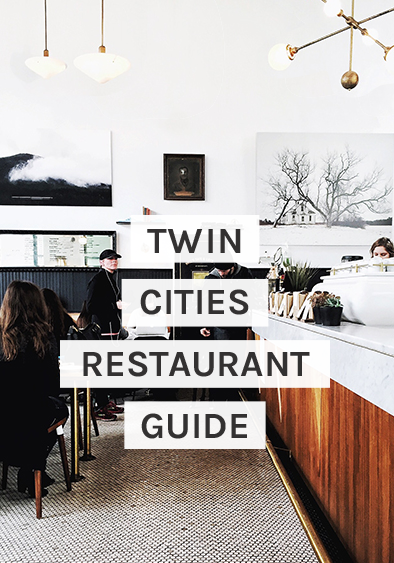


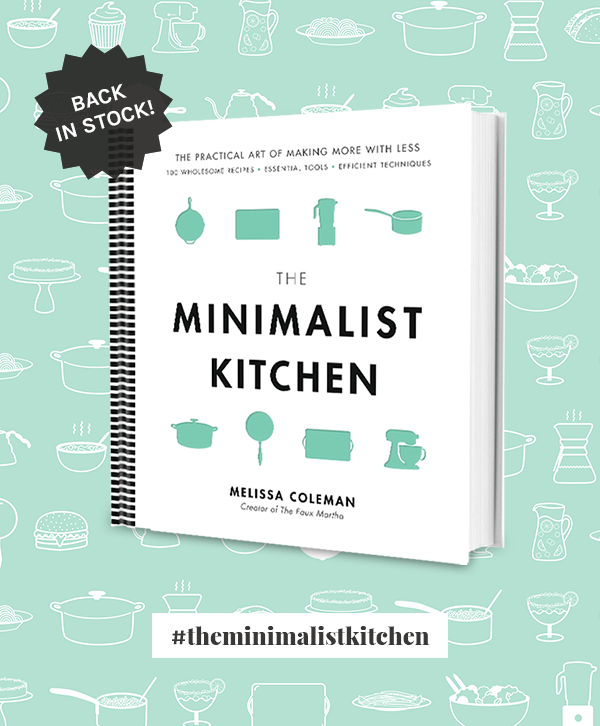



You may want to clarify membership and who can shop at a food coop (esp in the Mpls metro area). You don’t need to be a member to shop. Anyone can shop at the co-op, the price is the same whether shopper is a member. Sometimes, members get a small discounts (sale) on select items.
Thanks for adding that, Jaime!
Great article! I will share this with others who are not yet familiar with the process because it can definitely be intimidating when you first start.
One tip is to skip the labels and just use a sharpie on the lids of the jars. I find that the writing washes off fairly easily (at least it does when I am using the metal canning lids). I am often buying the same things though so just rewrite over the the PLU and tare weight.
As another commenter noted, I too often take photos or just note the # so I don’t have to bother with trying to write it somewhere.
You can also take a photo of the bin label, if you don’t want to use a sticker or grease pencil on your jars to note the #.
Thank you so much for talking about the tare. I never even thought about writing that on my container! I bought rice out of the bulk bin about a month ago and I tried to put it in a paper bag because I didn’t want the plastic and to my utter embarrassment it broke open and I spilled it all over. Luckily at my local co-op they are very kind. Now I might work on more containers. Thanks for the primer!
Out of all of the articles I’ve read lately on bulk shopping, NONE of them clearly explained ‘tare’ and this was the only part that confused me! How was the cashier supposed to subtract the weight of my container? I feel a bit silly that all you had to do was write the tare weight on a sticker for them. I will now bring my own glass containers without hesitation. Thanks 🙂
I felt the same way! It’s so simple once all the pieces come together but how do you figure out all the pieces?! I have a printable cheat sheet coming tomorrow!
great tips, hadn’t thought about bin shopping, so much appreciated and thank yoiu
Super helpful – thank you!
So cool! I wish stores in my area had bulk soaps and detergents. How do you stock up on spices? I use the plastic baggies provided, but I’d like to avoid that
I bought clear jars off Amazon, then buy the spices at the store in bullk and fill the jars at home. I put the name of the spice on top with a Sharpie, or a label. Easy peasy. If I am only buying enough of a random spice for one recipe, I just keep the baggie (don’t transfer to a jar) but make sure you write the date on the bag, so you know how old it is.
I literally just stood in the Fresh Thyme bulk section yesterday, curious about how it works, but a little too anxious to actually buy anything. This was a huge help! Thanks!